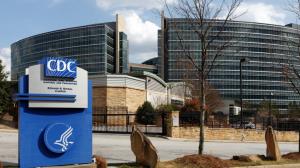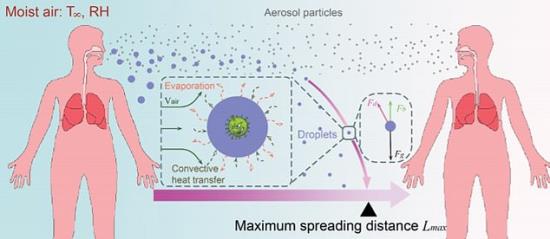 After incorporating the reality that small aerosol particles can transmit SARS-CoV-2, the virus responsible for COVID-19 in an August CDC guideline, the statement was withdrawn apparently following pressure from the White House. The latest revision to the CDC guideline published on Monday, October 5th restates the scientifically-supported contention that the six-foot safety distance on which precautions are based may not be valid under all conditions.
After incorporating the reality that small aerosol particles can transmit SARS-CoV-2, the virus responsible for COVID-19 in an August CDC guideline, the statement was withdrawn apparently following pressure from the White House. The latest revision to the CDC guideline published on Monday, October 5th restates the scientifically-supported contention that the six-foot safety distance on which precautions are based may not be valid under all conditions.
Research conducted in both the EU and the U.S. has shown that droplets below 50 micron in diameter can contain levels of virus that can persist suspended in air, resulting in infection when inhaled. This would be especially the case in red meat and poultry plants and in egg packing facilities where workers are in close proximity.
The transmissibility of COVID through aerosol particles was clearly demonstrated during the June outbreak in the Tönies hog plant in Germany. Authorities mandated major upgrades to the ventilation system including filtration and increasing the rate of air exchange to lower the level of aerosol transmission before processing resumed.
 In the early stages of addressing COVID-19 in the workplace, undue emphasis was placed on decontamination of surfaces including the routine of "deep cleaning of plants over a 24-hour period". Effectively workers in plants were infected not by surface contamination but by inhalation of particles emanating from either symptomatic or asymptomatic co-workers. Confined work areas maintained at low temperature and high humidity are especially conducive to infection as viable virus particles persist in droplets in the air.
In the early stages of addressing COVID-19 in the workplace, undue emphasis was placed on decontamination of surfaces including the routine of "deep cleaning of plants over a 24-hour period". Effectively workers in plants were infected not by surface contamination but by inhalation of particles emanating from either symptomatic or asymptomatic co-workers. Confined work areas maintained at low temperature and high humidity are especially conducive to infection as viable virus particles persist in droplets in the air.
Quoted in the October 6th edition of The Wall Street Journal, Dr. Joseph Allen, Director of the Healthy Buildings Program at Harvard University stated, "we have seen aerosol transmission in a restaurant and on a school bus and at a camp". He added "if you look at all of these outbreaks, they have a common thread "time spent indoors, no masks and a low ventilation rate".
The lessons to be learned from the updated CDC Guideline are:-
- Science must take precedence over politics in establishing guidelines and recommendations.
- Health administrators should draw on the experience of their colleagues in other nations and international bodies including the World Health Organization that coordinates dissemination of research on infectious diseases
- Acknowledging realities and accepting peer-reviewed research on transmission of infection is critical to devising appropriate measures to reduce rates of infection
In the context of egg packing plants, it is obvious that the following measures are required:-
- All personnel should be screened for health status before starting work
- All personnel should wear effective masks covering both nose and mouth
- Acceptable air exchange rates must be allowed despite the fact that this will increase the cost of utilities
- Personnel should be spaced as much as is practical. It is evident that a critical area for transmission is the point of transfer of packed eggs from discharge belts into outer containers. To date, there do not appear to be any plants with barriers between workstations as used in meat plants
- Installation of robotic packers that are by nature immune to COVID should be considered. Robotic case packers generally handle cartons on two adjacent discharge belts. Even if half the packers were equipped with robotic installations, concentration of labor for case packing would be reduced and workstations would be safer.
- The installation of hydrogen peroxide aerosol generators. These units can inactivate COVID virus on suspended aerosol particles, reducing the possibility of transmission especially in locker rooms and break areas in addition to the packing area and even offices.
Information on robotic packers can be obtained by entering “robotics” in the Search Block Details of atmospheric decontamination can be found by clicking on to the Synexis logo on the right side of the Welcome page.